One of the challenges in photography is figuring out what to do when plans don’t work out. To me, those challenges really show what kind of photographer you are, whether you can improvise.
That’s why I rarely plan a shoot with just one photo in mind. I try to think through what might happen, both good and bad, and have the gear to follow through. Last week provided a great example of that.
A friend and I were going to a local sunflower farm to do some late-day photography. The week had been sunny, with beautiful puffy clouds in an otherwise blue sky. It looked like we’d have great light and background for those sunflowers.
When we got there, though, the clouds had started to pack together in the west, and we only had a few minutes of sunshine. That’s where the planning really helped. I’d hoped for sunshine, but had also brought along a flash. Which meant I could create my own sunshine. I also had a ten-stop neutral density filter, thinking I might try some long exposure pictures showing blur in the clouds (with the camera on a tripod, of course). Plus, I had a second camera with a super-wide lens, and a second tripod, in hopes of shooting a time-lapse. And finally, I brought along a small backpack with LED lights, in case we were able to do some night shooting. This series of photos shows how I used all of that gear:
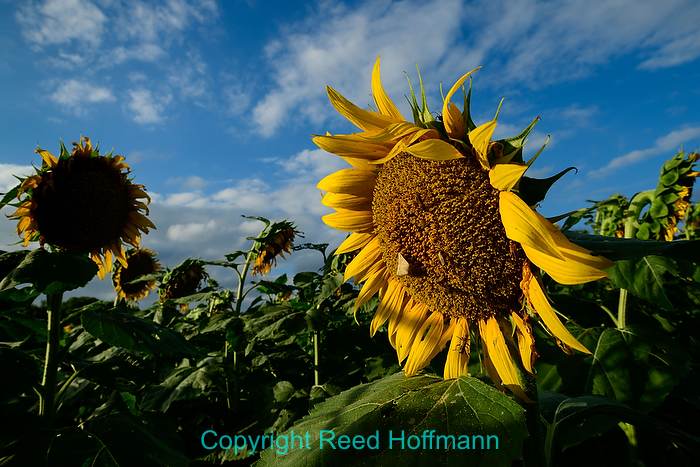
This is what we were planning to shoot, sunflowers lit by the late day sun, nothing special required, just a good angle and exposure. However, we only had a few minutes of this light before the clouds covered the sun. Nikon D850, Aperture Priority ISO 100, 1/160 at f/11, 0.0 EV, Nikkor 18-35mm lens at 23mm.
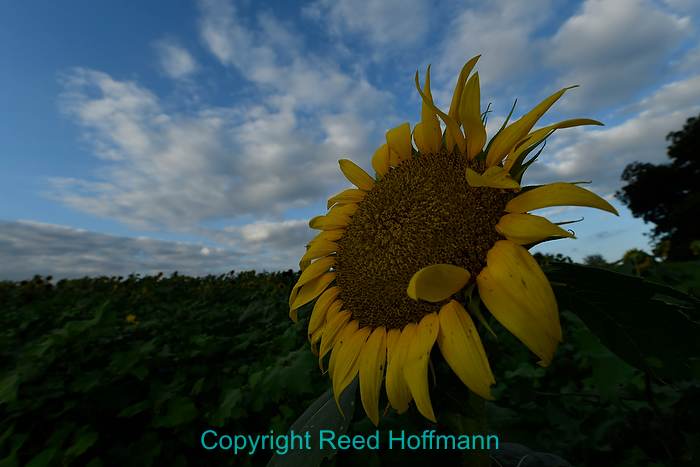
Once we lost the sun, the sunflowers were in shade but the sky was still brightly lit, creating an exposure problem for us. Nikon D850, Aperture Priority, ISO 100, 1/125 at f/10, -0.3 EV, Nikkor 18-25mm lens at 18mm.
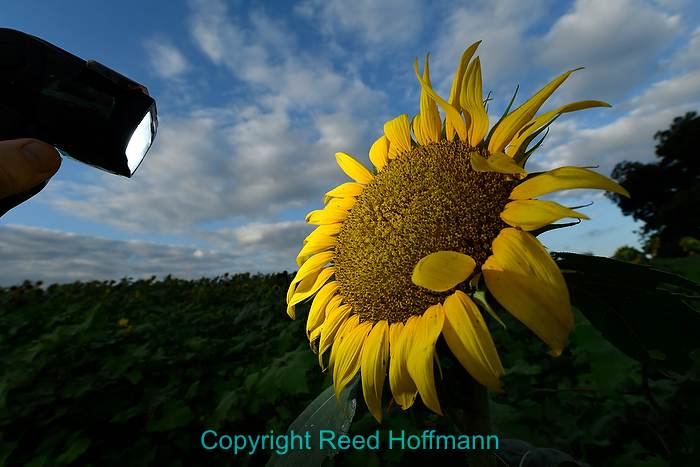
That’s when I got out my flash (a Nikon SB-700). I could use it to simulate sunlight, setting my exposure manually for how I wanted the sky to look and then adding the flash. Note that I’m using the flash off to the side to imitate the look of sunlight. Nikon D850, Manual exposure, ISO 100, 1/125 at f/10, Nikkor 18-35mm lens at 18mm.
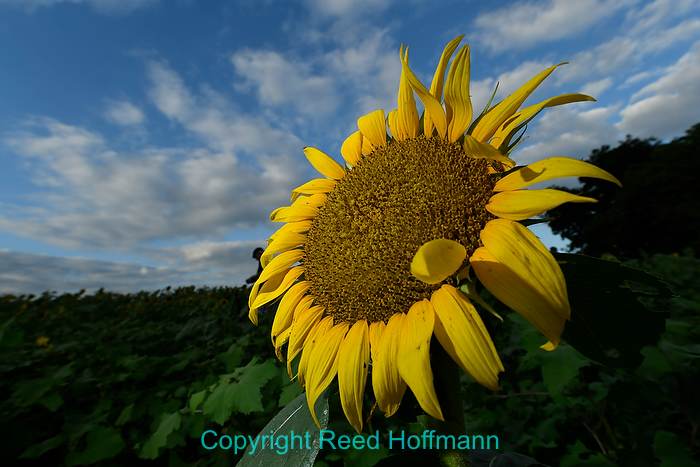
This was the result of using the flash as described above. Nikon D850, Manual exposure, ISO 100, 1/125 at f/10, Nikkor 18-35mm lens at 18mm.
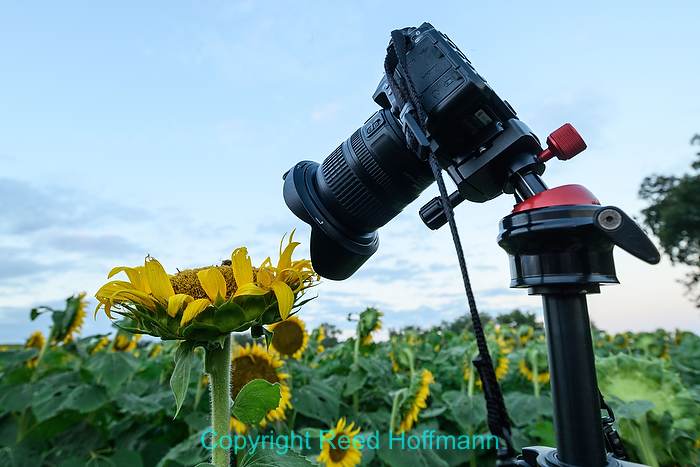
While I was busy using flash with the sunflowers, I had a second camera (Nikon D7500 with 10-24mm lens) shooting 30-minute (one frame every two seconds) time lapse sequences of bugs on a sunflower. Click HERE to see the resulting video, with some sound added.
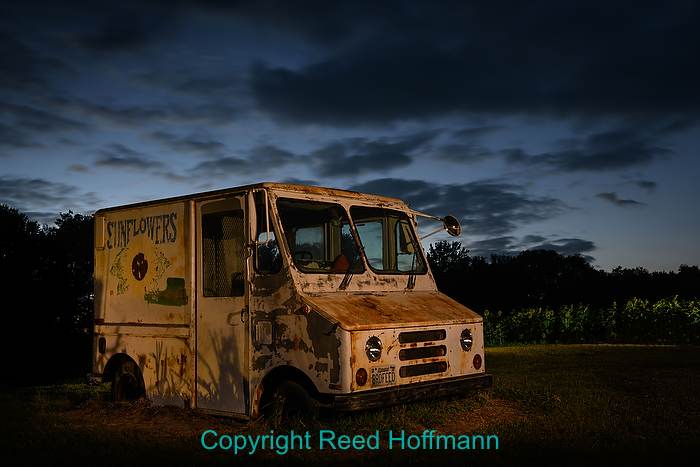
We finished the day by finding an old delivery truck behind the barns, and using a few small LED lights to illuminate it and the fields in the background as night settled. (I’ll write another story on this type of low level lighting in the near future) Nikon D850,Manual exposure, ISO 400, 4-seconds at f/5.6, Nikkor 24-120 mm lens at 38mm.
So the shoot didn’t work out as I’d hoped, but having alternate ideas (and the proper gear to pull them off) meant I was still able to make nice photos. And that’s the big takeaway here. There are always photos to be made. Perhaps not what you’d planned, but with some creativity and flexibility, you might even end up with something better!
(If you like this story, please share it with your friends and let them know about the links on photography I post on my business Facebook page. I’m also on Instagram and Twitter, @reedhoffmann)

